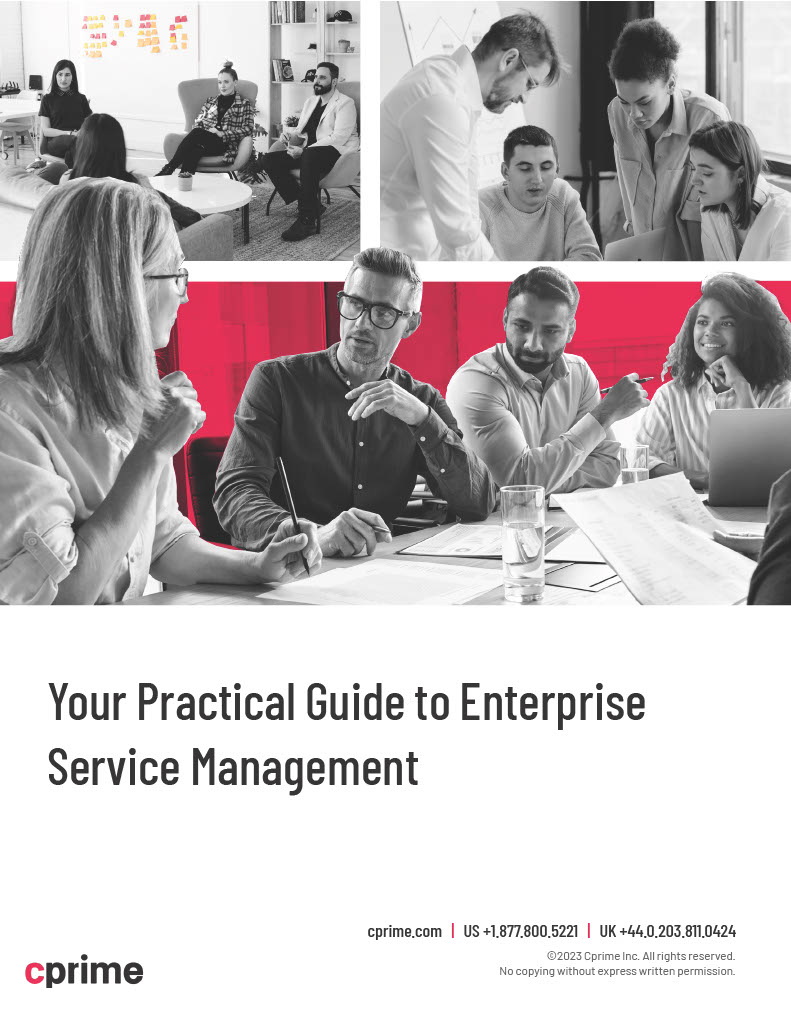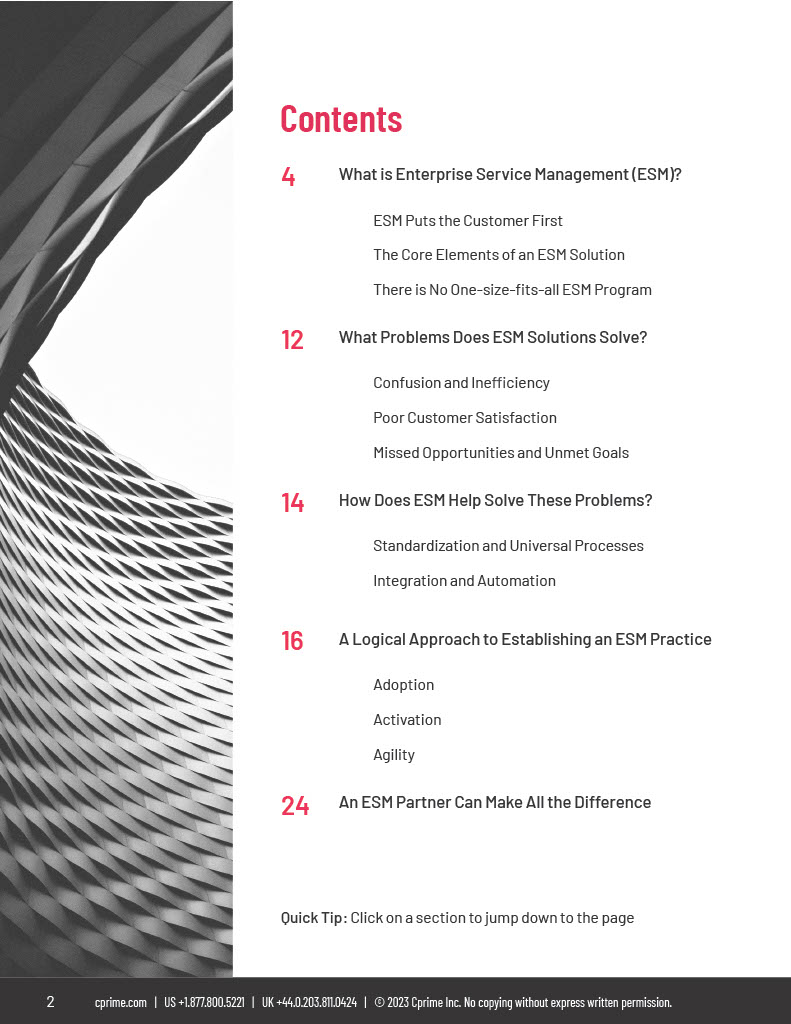Enterprise Service Management (ESM) is an optimized combination of the right software solution, well-thought-out processes…

Your Practical Guide to Enterprise Service Management
The speed and complexity of modern businesses are always growing and change is the only constant. To keep pace with ongoing acceleration, organizations undergo continual digital transformation. They adopt various software solutions to eliminate waste, create efficiencies, and streamline processes so they can keep pace with what their customers have come to expect, and many times, they work — to an extent.
Often, though, the very tools and processes that were expected to simplify and streamline the company’s internal workflow become a source of complexity in themselves. As a result, one department or line of business can become a silo, separated from others and struggling to collaborate effectively. More often than not, it’s the customer (the consumer of the service) who suffers in the long run, since the company is still trying to move fast, but those movements remain chaotic and unpredictable.
There is not one “silver bullet” solution to this modern business challenge. But, a relatively new concept — Enterprise Service Management (ESM) — has proven highly effective in smoothing out the internal roadblocks standard processes often create.
In this paper, we will cover
- A high-level overview of what ESM is (and is not)
- Why it can be beneficial for modern organizations
- A simple three-step implementation process that’s proven successful
- And a few hypothetical use cases that exemplify how a successful implementation improves the flow of work and information throughout the organization
What is Enterprise Service Management (ESM)?
ESM Facts to Consider:
According to the Service Desk Institute:
- As of Q2 in 2021, 68% of organizations have ESM strategies in flight. This is up from 43% just two years before.
- Of those same organizations, more than half consider their ESM strategies to be “well advanced”, up from just 7% in 2019.
- Just 11% of organizations have no plans to implement ESM, down from 20% in 2019.
- ESM is known by other names in various companies. Some call it just “service management”, while others label it a “digital transformation”. (We believe the latter is too broad to be limited to just ESM.)
- The top three business units to successfully adopt ESM are customer support, business operations, and HR.
Enterprise Service Management is defined as “the use of ITSM principles to support all business functions across the enterprise.” While that’s accurate, it’s important to note that it’s not as simple as copying and pasting the ITSM playbook into Marketing, Finance, HR, and so on.
It is common for IT organizations to have established ITSM processes in place that may serve as a launching point for ESM in the broader organization. But, by applying the relatively complex processes, tool components, and governance requirements required in the IT department to all business units, the organization risks overwhelming team members in Marketing, HR, Finance, and other groups and, in the end, lowering adoption rates and setting up the ESM initiative for failure.
Perhaps a better definition of ESM is:
An optimized combination of the right software solution, well-thought-out processes and workflows, and customized automation that effectively supports a customer-centric, data-driven approach to each service an internal business unit undertakes.
In some cases, certain aspects of an existing ITSM solution may carry over to the larger ESM program, but only to the extent that it fully supports the business unit’s goals and limitations. We support collaboration across the organization but recognize that IT tooling and processes do not translate to all business units. It is beneficial for an organization to consult a partner with experience in successfully delivering ESM to analyze and develop solutions.
Download the white paper now to keep reading! –>
Some of the images used were designed by freepik.com



